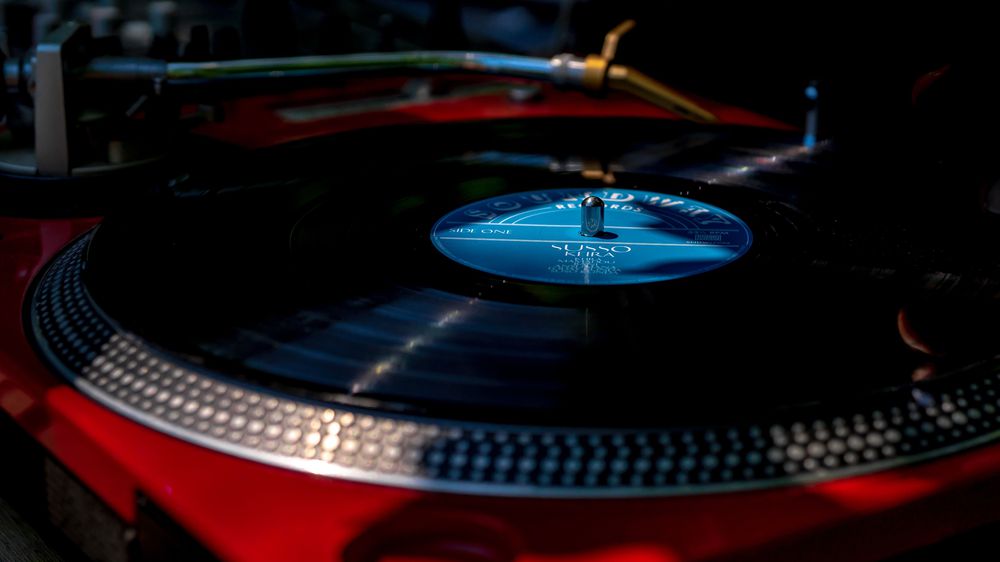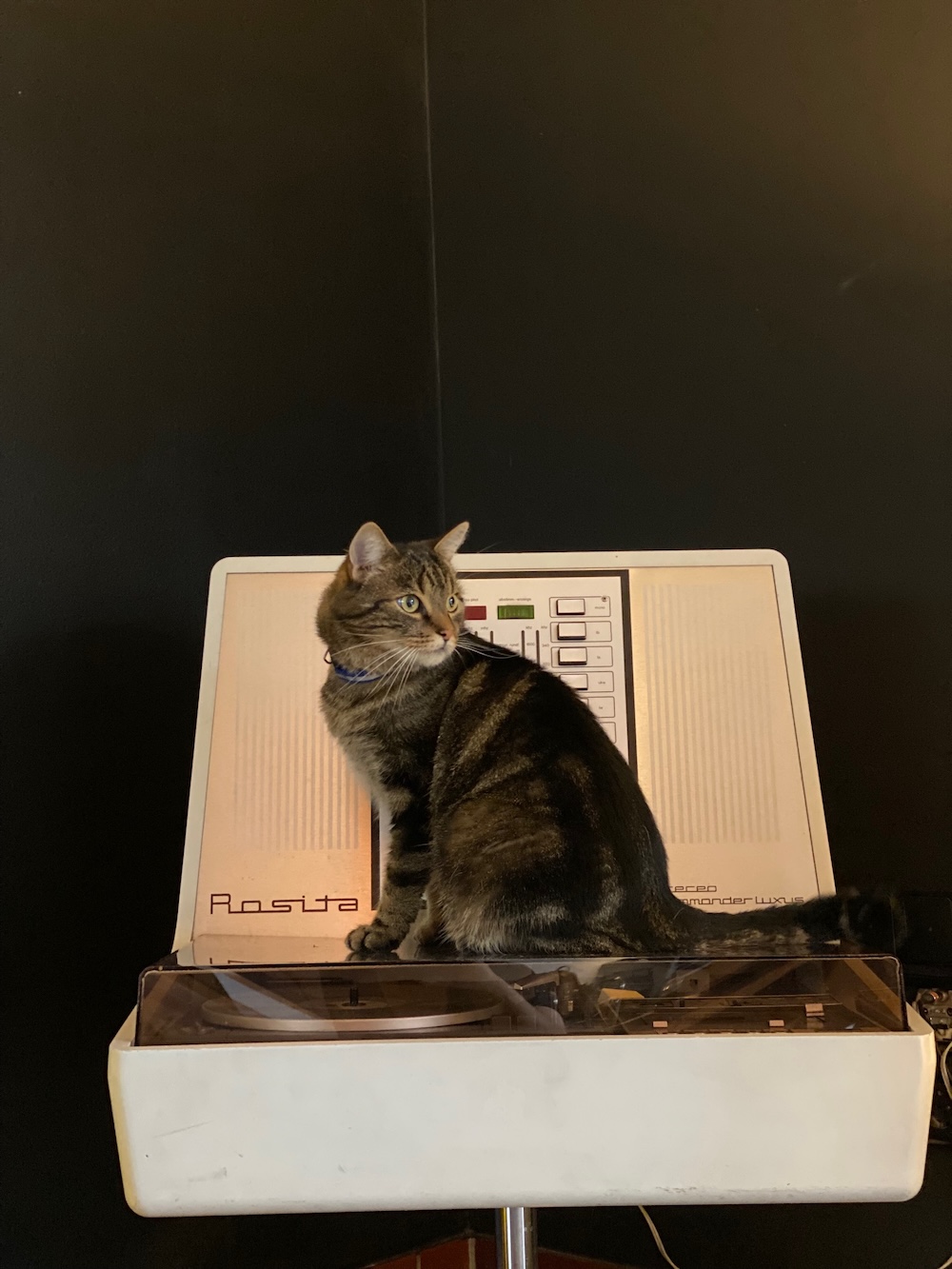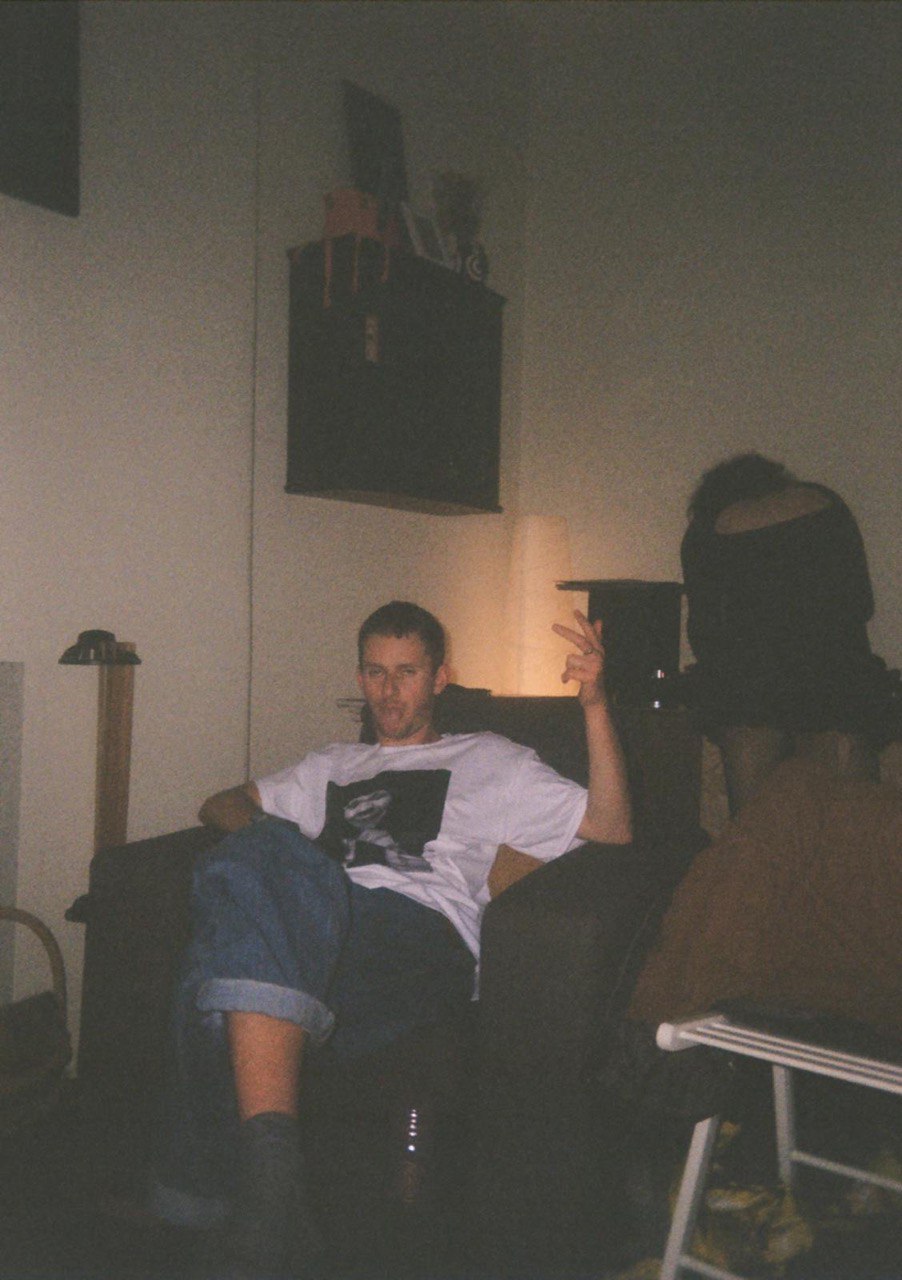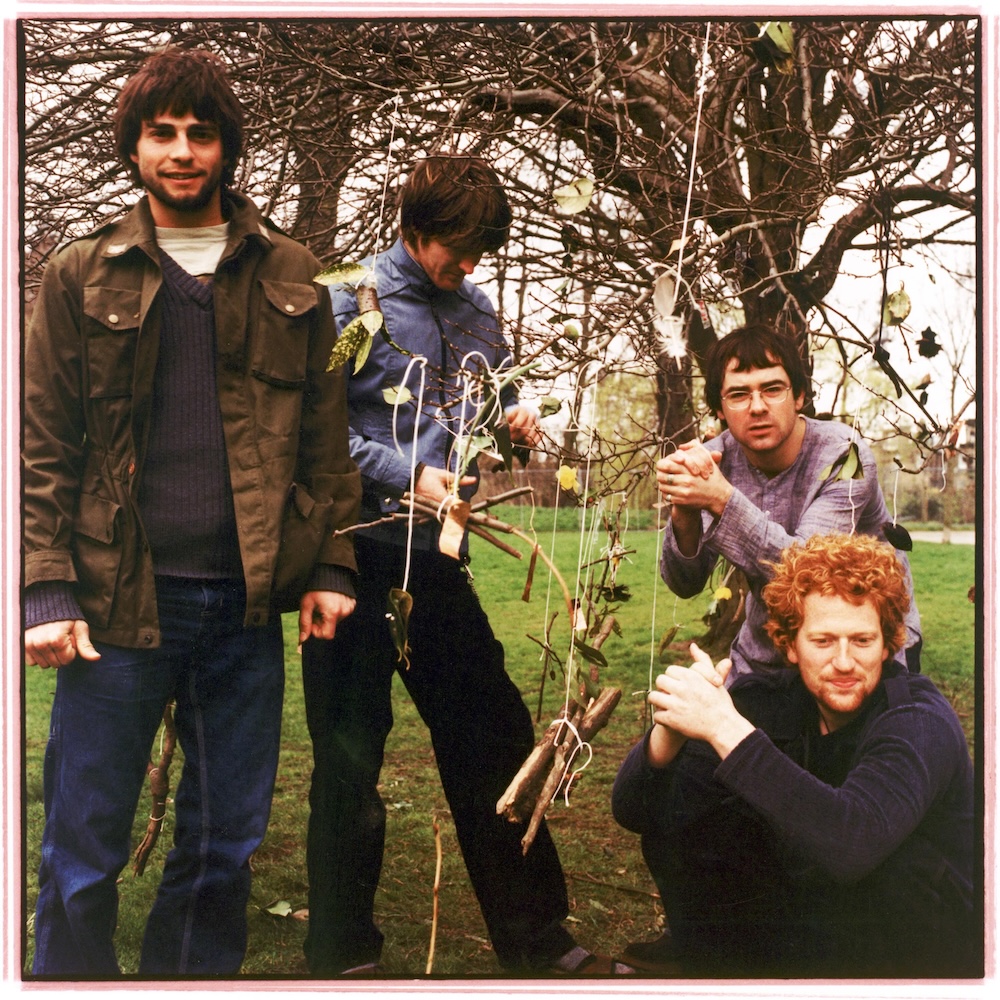Set Streaming: Debating the Methodology of DJ’s in a new Light

It's 3AM and darkness hangs thick in the air as noise reverberates around a crowded club… One friend whispers with eager anticipation to another amidst the chaos, something deep and profound..
“This record is great! I copped it on wax last week…”
Blah blah blah.
I’m sure you’ve seen it all before at this point. Countless articles, online discussion and strong opinion have run the method debate into the ground. Just like the relatively archaic turntable technology that catalyses this narrative, discussing performance methods from this binary angle is outdated, and dare I say it, pointless. Who really cares about how music is played? Do these debates actually have any value?
Personally, whether the incoming track is transmitted via needle or not is the last thing that crosses my mind during the twilight hours. As long as I'm dancing I couldn’t care less. Anyway, more of this later. I feel that being this critical or analytical, depending on how you view it, is worthless. The dancefloor is dictated by the quality of the experience rather than method of performance. Whether the artist is cueing up tracks on a CDJ or dropping the needle is irrelevant.
Or is it?
The expression “if it ain’t broke, don’t fix it” is more often than not a sound statement to go by. However, in the context of music, where would we be without the rulebreakers and innovators that flipped the script? The sonic complexion of society is in a constant state of evolution, reacting to new ideas, technologies, tastes and much more. Focusing specifically on the art of DJing, the statement above is as resonant as ever. Bespoke rotary mixers, designer decks and streaming services are all products of progression, reconstituting selecting and everything that comes with it. Every step towards pressing play has felt the effects of technology for better or worse. From preparation to performance, it’s hard to ignore how vastly different this artform is today compared to thirty years ago.
This is where the digital vs vinyl argument has re-found relevance. With its contemporary sheen, the method by which the system shakes has varying significance for musicians, labels and managers the globe over. Superficially, selection may seem harmless, but once you consider the wider impact of technology some troublesome traits rise to the surface. Perhaps those deemed 'purists' or 'snobs' have a degree of validity after all?
The technologies I’m specifically talking about revolve around streaming services such as Spotify and Soundcloud. From their basic function of allowing people to listen to their favourite tunes and discover new music, to CDJ compatible playlists and mobile DJ apps, this contemporary mode of consumption has made a resonant impression upon the music industry. For better or worse, these technologies have reshaped the routine and ritual of the DJ.
With so much technology at the disposal of the modern DJ, it’s often hard to remember the origins of the artform. Slapping acetate discs down onto the slipmat, selectors delicately placed the needle onto the rotating record to produce warm, crackling tones heard through speakers and headphones. With hands and ears in sync, the jockey manipulated music using their own body, scratching and looping with masterful technique. Though the push of a button makes this hard to believe, old methods could still produce novel sounds.
It's easy to see why some disc jockeys are annoyed by the affordances of modern variants.

One of the most obvious ways in which digital technology and streaming services have changed the game is accessibility. More and more people are now able to DJ, not just in practical terms but from a financial point of view.
Thirty years ago, you had a turntable and record and that was that. However, times have changed, much as some will choose to protest.
The thought of walking up to a CDJ and plugging in a USB loaded with heaters was unimaginable. The CDJ allowed selectors to transport their tunes in a far easier manner than lugging around a bag (or two) full of wax. Obviously, this made life a hell of a lot easier, but carries with it some unwanted baggage and problematic consequences.
Making DJing easier allows more people to get involved. Simple. How can there be anything wrong with that. Think back to when you first discovered clubbing: alien sounds so loud you could feel the sizzle from the cymbals sear your ears. The fragrant fog diffusing across the room, bright lights momentarily blinding. Trying to navigate through the collective mass of individual bodies swaying rhythmically to the beat. This sensory overload is completely unknown and completely addictive. Watching the cloud-cloaked shadow conduct magic, manipulating bodies with their wizardry technique, you couldn't help but want to try it.
This inspiration has led to countless numbers of people giving DJing a go. Whether a bedroom DJ or a fully-fledged professional, I can’t see anything wrong with the global music community growing. Celebration and evocation are the ultimate goals of music; back when maestros in Ancient Greece used to chirpse with a lyre in hand, or national anthems were composed, music was a means of conjuring emotion or expressing unity. It has always been used to bring together and enjoy.
In this modern world, technology allows almost anyone to soundtrack an occasion and endulge in their favourite sonics. This is a great development.
However, some of the marketing and functionality of these new technologies are problematic.
Take the edjing Pro: an iPhone compatible app labelled as “the app that turns you into a pro DJ.” I never realised it was that simple, that an algorithm can override any sense of rhythm and instantly turn you into the baddest disc-jock in the land.
Am I being sensitive? Probably. I’m sure that this will allow way more people to get involved with DJing but when you look into this a little deeper there are a couple of issues that spring to the surface.
From the look of the promo video, I’m struggling to see how this resembles any form of DJing I’ve tried or witnessed before. That could well be a good thing – for beginners just starting out, it could provide an intuitive interface to pick up some basic skills and muck about with mates. However, beyond this, from a technical point of view, I don’t quite know which “professional DJs” would pick this over their trusted Technics.
Another issue I have is the fact that this video takes place in the club. I don’t know about you but if I paid London prices to go and see someone DJ on their phone, I’d be pretty pissed off. It would be like watching a band whip out a copy of Guitar Hero to play a gig.
It’s easy to understand why some legendary selectors start using Serato or USBs when touring around the world, no more bad backs for starters. However, can you imagine if those OGs started using their phones?
This app seems like a great idea for a house party. No need to shell out some extra squids on hire CDJs or borrow a mixer from your pal. Bouncing needles and isolating blocks of concrete don’t come into the equation either. Just plug this right into the aux and have it. However, to pay actual money to watch someone use an app cheaper than your ticket seems like a bit of a push for me.
The way the app is designed distances this style of DJing from authentic jockeying. It doesn’t seem difficult or inspiring using a slider to transition between tracks. Easy-to-use effects can produce some novel manipulations on classic sounds but this interface seems far too manicured and intuitive to be deemed a real for of DJing. Rather, it could be seen as an aux chord with some added features.
For me, the most concerning element of modern technologies such as this app revolves around where the music comes from. It’s no secret that digitizing music opened up a can of worms for artists and labels on a number of levels, especially from an economic standpoint. File-sharing applications like Soulseek have made it easy for anyone with an internet connection to access high quality files, free to download and yours to keep.
Consumption trends have also been impacted by music’s move towards the 320. Despite the recent surges in record sales, the most common means of purchasing music is over the internet in digital format. Bandcamp, iTunes, Beatport – whatever marketplace you can think of has allowed music makers to sell directly to their fans. This is great for exposure, properly internationalising the marketplace, and also means that individuals don’t have to pay for an entire album or record if it’s only one song that they’re after.
In theory, independent labels and artists can sell more music than ever before: they can reach a global audience and can sell unlimited amounts of albums, EPs and singles. However, the combination of pirate downloads and the option to buy a single song rather than an entire album probably means that their returns aren’t as good as they should be.
Another dimension of the digital soundscape that is cheating talented producers, musicians and labels out of their fair share are streaming services. As harmless as they seem, the likes of Spotify and Soundcloud are built for the consumer, not the creator. These services leave any conscious listener or self-proclaimed fan of music in an awkward position.
On the one hand, these modern forms of consumption offer unparalleled experiences when compared to their analog counterparts. Soundcloud and Spotify could almost be considered a form of social media, allowing users to connect to like-minded people and share music amongst their friends. Playlists can be curated by multiple people and messaging functions allow for conversation. Fostering increased connectivity amongst producers and fans is an awesome feature, one that I can only see as beneficial for the music industry.
Even on the most basic of subscription plans, the user simply has to create a free account to access an incomprehensibly deep database of music. Bar a few adverts that interrupt your listening sessions, seemingly every artist under the sun has their music or a profile on these applications and websites.
The practicality of these platforms are another attractive characteristic. As long as you have an internet connection, you can listen to your customised playlists, artist ‘radio’ streams and the latest music to hit the web on the go. The consumer no longer needs to rely on an iPod synced-up with music they’ve (hopefully) purchased when they’re on the go.
Whilst the social media-esque qualities are constructive and valuable, the awkwardness of streaming platforms can be found as a result of their functionality and practicality.
When looking at how consumer behaviour has changed, it’s clear to see that the right people aren’t receiving the benefits they should be for the fruits of their labour. Those who have spent hours slouched over their hardware, tirelessly tuning their work in progress, or the dedicated curators running labels, stamping records before boxing up and posting countless packages full of wax – these are the individuals who should be reaping the rewards.
Streaming services are often the choice of your average Joe because of their practical affordances. Buying music isn’t the done thing anymore. Why would you cop tunes when you can listen to them for free? Even if you choose to pay for a Soundcloud Pro account or a Premium Spotify account, that money isn’t going into the pockets of your favourite producers.
On Spotify, online articles estimate that each stream of a song returns between $0.006 and $0.0084 to the ‘holder’ – i.e. the person who uploads that song. I don’t think any artist is looking towards these services to make a living, but this seems like a severely unjust return for the community that powers Spotify and enables it to exist.
Alongside this resultingly skewed economy, another aspect of streaming services that is having a detrimental effect on artists and labels receiving their cut is the ability to stream directly onto CDJs.
Pulselocker, Soundcloud and Spotify databases have all been or continue to be accessible on Pioneer gear. It’s one thing for the average consumer to use these platforms as their main source of music but for DJs to be able to stream tunes for their performances, there are few positives to be found.
The glaring issue is again another one of economic proportions. These functions allow the DJ to perform in a club without having to buy any of the music itself but rather pay a minimal subscription to access all of the tools for their set. Again, the creative minds whose work is the source of your Friday night soundtrack are not being rewarded for their efforts, whereas the DJs performing can earn a fat cheque from their material.

DJs who stream to their CDJs can benefit from the hard work of other stream users too. Back in the days when vinyl was the only source of musical consumption, selectors earned their reputation through hours and hours of digging, trawling through crates in record shops to find those rare and unknown gems. This process sounds far more draining than playing the Discover Weekly playlist on shuffle – there was no guarantee of finding a hit, even after carrying towers of wax to the turntable and watching the needle dance through countless grooves.
Any public playlist can be played through CDJs, effectively killing the need to dig (well, for lazy DJs at least). Even people that builds sets off of the Youtube algorithm are effectively digging via digital, albeit with the help of code.
One way of interpreting this is as a form of identity theft or ‘performance piracy’. Lazy DJs can hide behind the laborious curations of successful DJs, masking their inability to be original or think for themselves, as well as being able to cash in on the hard work of others.
Unreleased tunes and rips from radio sets are also commonplace on the likes of Soundcloud. Being able to play these in a set completely nullifies their unreleased status. I’m sure plenty of labels and artists uploaded these tracks to allow their fans to listen whenever, whilst also knowing that only them and their mates would be able to play these out. Withholding a song from release is a form of security, ensuring that the only time ravers could hear these tunes on a system would be during your performance. It adds exclusivity to your sets, making them even more exciting. Knowing that those intermittent occasions will be my only chance to hear certain songs on a systems spurs me to go to the club and experience their force.
Can a DJ that streams to their CDJ be considered a genuine fan of music?
I hope I didn’t touch a nerve.
It’s always important to consider the impact of your actions (that got pretty deep, eh?) and how all the concerned parties will be affected. Streaming to your CDJ will never support the scene as robustly as buying music digitally or from your local record shop. Even labels and artists exploring the starchy sounds of Business Techno will feel the sting of a mass uptake of DJs preferring to stream over owning a song or record outright.
It’s important to be conscious in your consumption if you want to contribute to independent scenes and subcultures. How are up-and-coming producers going to develop their sound if they aren’t supported financially? I’m probably in danger of sounding prescriptive here, but you should buy music if you want to endorse it, especially if you’re planning on using it in your performances. Our investment allows self-reliant imprints and maestros to invest, both time and money, into their art. This is the sort of thing that progresses music far more effectively than an algorithm.
Does context not determine the acceptability of doing so?
It’s no secret that collecting records is like taking a lighter to your wallet. Turntables aren’t cheap, and forking out for the latest releases adds up. This economic barrier makes it difficult for everyone to use wax as their primary source of listening, let alone cop records in the first place.
But this is exactly where context comes into play. If you’re a bedroom DJ or playing at a mates house party, there’s no economic return for you to benefit from other than maybe a couple cans of lukewarm red stripe. However, if you’re a promoter playing at your night, or a selector with a booking fee, it would be ironic if you streamed your selection. In these contexts, no one is entitled to curating their set from ‘free’ music – it’s using someone else’s hard work to benefit yourself.
What does this say about the state of modern DJing?
One interpretation is that more and more people want to get involved with dance music. Nobody would waste their time designing these apps and creating these technologies if there wasn’t any demand. Being able to DJ is becoming more accessible, growing the collective community. Some people probably don’t want this to happen, those truly underground vinyl-only snobs, but I can’t really see anything negative about more people being inspired and wanting to get stuck in.
On the other hand, DJing shouldn’t be easy. The whole process is exhaustive and takes a lifetime to perfect. From knowing where to dig, which shops stock those hidden gems, how to beatmatch, when the track breaks down, how to take ravers on a journey. These aren’t skills that just happen overnight. The fact that an app promises to transform you into the next big thing shows that it isn’t the real deal.
Being able to copy a DJ’s identity to promote your own has to be the worst outcome of these streaming technologies. Nobody has the same taste in music, or the same ideas when it comes to selecting tracks, and it should remain that way. Just because you can copy Ben UFO’s latest playlist and disguise it as your own doesn’t mean your a good DJ. Be creative, trust your instincts, play what you want to hear. Going out and hearing someone play for the first time, or having a wiggle to your favourite selector -, the great thing about being on the floor in either situation is that you get taken on a unique and individual journey. The best performances leave an imprint because they take on their own personality, exploring the sonic spectrum in distinct ways.


















Must Reads
David Holmes – Humanity As An Act Of Resistance in three chapters
As a nation, the Irish have always had a profound relationship with the people of Palestine
Rotterdam – A City which Bounces Back
The Dutch city is in a state of constant revival
Going Remote.
Home swapping as a lifestyle choice
Trending track
Vels d’Èter
Glass Isle
Shop NowDreaming
Timothy Clerkin
Shop Now